Cuban Medical Care 5
History of a medical feat

History of a medical feat
Maylín and Mayelín Téllez Bruzón were born on December 18, 1973, united by the abdomen and were the first Siamese twins to be successfully separated in Latin America
 Author: Juan Morales Agüero | juan@juventudrebelde.cu
Author: Juan Morales Agüero | juan@juventudrebelde.cu
December 19, 2020
Translated and edited by Walter Lippmann for CubaNews.
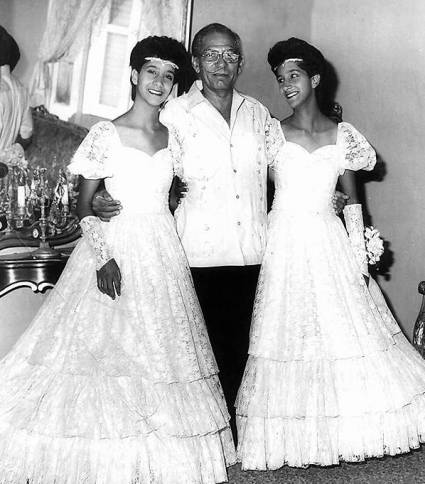
When they turned 15, Dr. Vazquez Fernandez accompanied them in the celebration. Author: Norge Santiesteban Published: 19/12/2020 | 12:07 pm
Las Tunas – At 3:00 pm on December 18, 1973, the phone of Dr. Rafael Vazquez Fernandez, a surgeon at the Hospital Vladimir I. Lenin Hospital in Holguin, began to ring with insistence. “Good afternoon, tell me,” answered the doctor when he picked up the phone. “Dr. Vázquez? -Yes, this is Dr. Hernández Ojito from the Victoria Maternity Hospital in Las Tunas. A woman has just given birth here, Siamese twins. Would you help us evaluate them?”
The news took his breath away. “Siamese twins! -exclaimed the also professor of surgery at the Universidad de Oriente. You don’t see that much in Cuba. And he recalled having read that the highest proportion of twin births is among the Yoruba in Nigeria, where almost one in every 22 births is a twin.
Dr. Vazquez Fernandez didn’t think twice: “I’m going there,” he said before hanging up. Minutes later, he boarded a car, took the road, devoured the 70-something kilometers [43 miles] that separated him from Victoria de Las Tunas and in a matter of an hour and a half he was on the ground in front of the health institution of the neighboring province. Not by a long shot did he suspect that days later he would star, along with other specialists, in an event of unusual transcendence in the history of Cuban and Latin American medicine.
The preliminary assessment
In front of the Mártires de Las Tunas hospital, his colleague Hernández Ojito was waiting for him. He had attended the multiple birth together with pediatrician Clara Bisquet and doctor Orlando Zaldívar. Without wasting a minute, they went to the room where the little Siamese girls Maylín and Mayelín Téllez Bruzón – each weighing six pounds – were taking their first nap on earth, joined at their abdomens.
The preliminary examination concluded that their separation could be attempted. They requested an ambulance and left for the Lenin Hospital in Holguin, opened eight years earlier. “How much times have changed,” said Dr. Vazquez Hernandez. And his thoughts went back to the time of the Hindus of the 16th century, who incinerated Siamese creatures as soon as they came to life.
Already in the City of Parks, a multi-disciplinary team was formed to study the feasibility of separating girls through surgery. Anesthesiologist Pura Avilés, pediatrician Félix Álvarez, hematologist Norberto Rodríguez and doctor Vázquez Fernández performed cardiovascular, hematological, genetic, blood gas and radiological tests on them.
The results were encouraging. All that remained was to consult the parents. “Success is possible, but it can also fail. Do you agree to the operation?” they were asked. And they agreed.
For the first time in Latin America, an intervention of this kind would be carried out. Other cases in the world appeared in the literature, but not identical. The foundational separation of Siamese twins took place in France in 1689. They were united by the navel. And if we are talking about Siamese twins, the oldest were the English Mary and Eliza Chulkhurst, born in 1110. They lived 34 years with a single pair of upper and lower limbs, a rectum and a single vagina.
Meanwhile, the most famous conjoined twins were Chang and Eng Bunker, born in 1811 in Siam, today’s Thailand. They lived to be 63 years old. Doctors refused to operate on them because they had… a common liver! They both married and had 10 and 12 children, respectively. Chang was the first to die. A few hours later Eng died. Since then the term Siamese designates this type of twins.
A medical feat is accomplished
But let’s continue with Maylin and Mayelin. At midnight on December 27, 1973, the surgical procedure began and lasted almost two hours. An atmosphere of great expectation was felt in the rooms surrounding the operating room. Bohemia magazine reported this in a memorable article: “For the first time in the history of medicine in Cuba, the complex task of operating on two people at the same time in the same room, and, in this case, on two small creatures only nine days old, and closely connected by the abdominal region, was undertaken.
Two groups were formed to provide differentiated care to the Siamese twins during the surgery. In the first, Doctors Vázquez Fernández, Hernández Ojito and Viamonte would assume the separation. In the second, on a parallel table, Doctors Cabrera, Velázquez and Abadía would be in charge of reconstructing their abdominal walls, once they had been separated.
“We operated with an electric scalpel, which cuts and prevents bleeding,” said Dr. Vazquez Fernandez later. We faced three tense moments: the opening of the abdominal cavity, the cutting of the xiphoid appendix, and the section into two equal parts of the common liver. This organ, by the way, had independent systems for each girl. Otherwise, the operation would have been fatal for one of them. All obstacles were overcome.
The prestigious anesthesiologist Pura Avilés also referred to her experiences at that time. “We faced another extremely challenging technical difficulty when proceeding with the endotracheal intubation of the creatures. It happened because of the proximity of their faces and because of the unwieldy heads. But we were able to solve these problems as well.
It was a resounding and resounding victory. The Holguin newspaper ¡Ahora! in the edition of January 5th, 1974, highlighted in a great headline of its front page the unusual event: “GREAT SUCCESS OF CUBAN MEDICINE”. According to the specialized literature, it was the 132nd surgical intervention on Siamese women in the history of humanity. Ours, as it has been said, were born by natural childbirth, but united from the xiphoid appendix to the umbilical region.
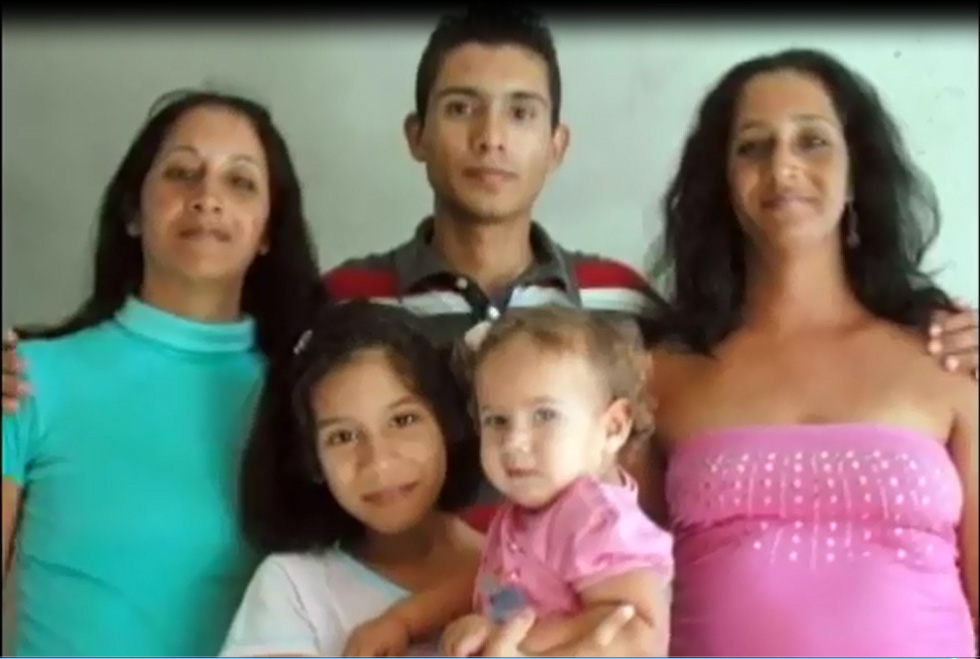
Motherhood was another of the prizes that life offered Maylín and Mayelín. Photo: Norge Santiesteban
Today Maylín and Mayelín are two completely normal women, who this December 18th, turned 47 years old. Both continue to reside without setbacks or consequences in their native Las Tunas. In addition to granting them strong health and notoriety, life also offered them the joy of being mothers. “At present, we don’t live together, because each one has her own family,” says Mayelín. But we visit each other frequently and are aware of each other to help each other if necessary. Maylín, for her part, remembers that “we lost our mother a few years ago. She always wanted us to be together and that is what we do”. The separation of the Siamese from Las Tunas is recalled in a sculpture erected at the School of Medical Sciences in Holguin. It’s a tribute to a feat of Cuban medicine that began to be shown on December 18, 1973, when the sound of Dr. Vázquez Fernández’s phone ringing augured something that still fills us with wonder.
Two Months in Bolivia Without Cuban Doctors

How Does Two Months in Bolivia Without Cuban Doctors Translate?
An intense and insulting campaign against the medical collaboration that Cuba provides to the world characterized the U.S. imperial strategy implemented in 2019. It found submissive governments that preferred to leave their people without health care, in order to play along with the White House.
by Nuria Barbosa León
January 24, 2020
Translated and edited by Walter Lippmann for CubaNews.
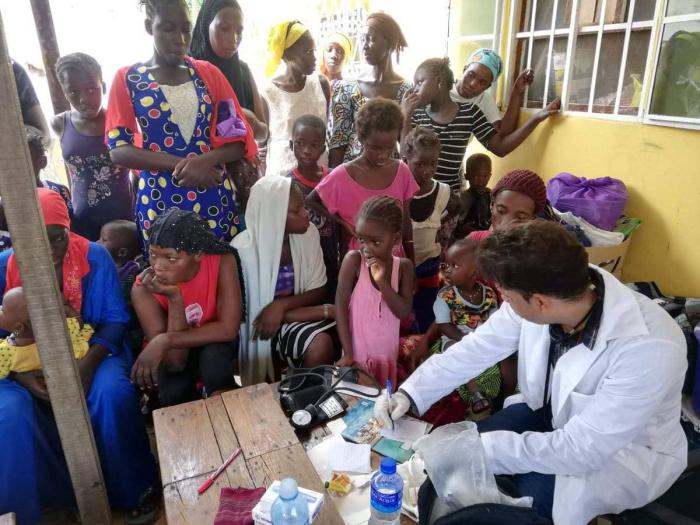
More than 160 nations have received help from Cuban doctors in 56 years of collaboration. Photo: Manuel Guillermo Wong Reme Photo: Granma
An intense and insulting campaign against the medical collaboration that Cuba provides to the world characterized the U.S. imperial strategy implemented in 2019. It found submissive governments that preferred to leave their people without health care, as long as they played along with the White House.
One example is the recent statements made by the self-proclaimed president of Bolivia, Jeanine Áñez. On January 22, at the ceremony to celebrate the founding of the Plurinational State, Áñez once again used hackneyed arguments against the altruism of Cuban health professionals.
In response to such fallacies, Cuban Foreign Minister Bruno Rodríguez, in his Twitter account, described the lies of the coup leader as vulgar. He urged her to explain to her own people that, after the return to Cuba of the collaborators, as a result of the violence to which they were subjected, more than 454,440 medical visits had been cancelled.
He also said that the two months of absence of Cuban doctors in that Andean-Amazon nation have resulted in almost a thousand women who have not received specialized assistance in their deliveries, and 5,000 surgeries, as well as more than 2,700 ophthalmological durgeries, which were not performed. “They are not just figures, they are human beings,” wrote the Head of Cuban diplomacy.
The dismantling of the programs based on Cuban medical cooperation has been financed with more than $3 million, granted by the Agency for International Development (USAID), a U.S. institution that provides funds for different aggressive actions against governments that Washington does not like.
The Cuban medical brigades in Brazil, Ecuador and Bolivia disappeared as a result of all this persecution by the United States, which questioned the professionalism and dedication of the more than 400,000 Cuban health workers who, in 56 years, have carried out missions in 164 nations.
This campaign to discredit Cuba is led by the White House National Security Council under the sponsorship of senators and congress members associated with the anti-Cuban mafia in Florida and right-wing State Department officials.
They invent the premise of a supposed “modern slavery” and “human trafficking” for Cuban doctors and hide the humanistic sense of such missions abroad. These have helped to recover health indices such as the decrease of infant mortality and maternal deaths; the curing of infectious diseases by epidemics and others.
They do not know that Cuban doctors, before leaving, receive training about the place where they will work. They sign a contract of employment with all the legal guarantees and where the terms to be fulfilled by both parties are made explicit. They take with them a medical record with the updating of their vaccines, plus the legalization of their professional titles.
Several countries even require these professionals to take knowledge tests, and medical authorities from these countries travel to Cuba to take tests in languages other than Spanish.
Those who go on medical missions do so absolutely freely and voluntarily. In Cuba, their families receive their full salary or it is kept in a bank account, while they have a stipend in the country of destination, along with other benefits (payment of accommodations, electricity, water and basic services).
The compensation Cuba receives for the cooperation it provides goes towards the financing, sustainability, and development of the public health system, which is free for one hundred percent of Cubans. This is something difficult to understand in the capitalist world, where a good part of the health services are paid for.
All the discrediting promoted by Washington is accompanied by attempts to re-establish the so-called Parole Program for Cuban Medical Professionals, which existed until January 12, 2017. This encourages desertion, payment of tickets and legal services, provision of U.S. visas and travel documents to aid workers in third countries. Its is the sabotaging bilateral agreements signed with them, depriving them of their services and depriving us of highly qualified human resources.
Today, the response to this new war has been to continue saving lives, providing health and welfare. While the governments denigrate the stories of Cuban internationalism, the beneficiaries are grateful and recognize that this achievement completely transcends geopolitical interests and any ideology.
In context
– November 2018:
Cuba decides to return home to its brigade in Brazil, because President Jair Bolsonaro questioned the dignity and professionalism of our doctors present in 3,600 municipalities in that country, which between 2013 and 2018 provided health coverage to 60 million Brazilians.
– May 2019:
The Secretary-General of the OAS presided over a conference to accuse Cuba of alleged crimes against humanity, based on Cuban medical cooperation abroad.
– June 2019:
The State Department, in its Report on Trafficking in Persons 2019, denounced Cuba’s international medical cooperation.
– July 2019:
USA The US imposes visa restriction sanctions on Cuban officials linked to medical missions.
– July 2019:
The Agency for International Development (USAID) provides three million dollars for projects against Cuban doctors abroad.
– During 2019:
U.S. Embassy and U.S. government officials went to authorities in several countries to inquire into accurate data on Cuban medical cooperation, with the aim of finding ways to eliminate it.
– October 2019:
The Government of Ecuador decides to conclude the health agreement with Cuba, alleging economic reasons, but spreading slander in the press about the participation of Cubans in the protests carried out by the Ecuadorian people.
– November 2019:
There were 26 serious incidents against our aid workers in Bolivia, and therefore the medical mission in that country was terminated.
– Throughout the year 2019:
27 bilateral legal instruments were signed in Cuba with 23 countries.
Sources: Minrex Declaration: The United States Crusade against Cuba’s International Medical Cooperation, December 5, 2019, and “Continue to promote Cuban health as a reference for the world”, Minsap report 2019.
Cuba: 200 Cases of Leprosy Every Year

Cuba reports around 200 cases of leprosy every year, a disease that is well supervised and controlled on an outpatient basis
Many of the affected patients experience some form of discrimination and exclusion and therefore face mental health problems, such as depression or anxiety.
by Web Editor
January 29, 2020
Translated and edited by Walter Lippmann for CubaNews.
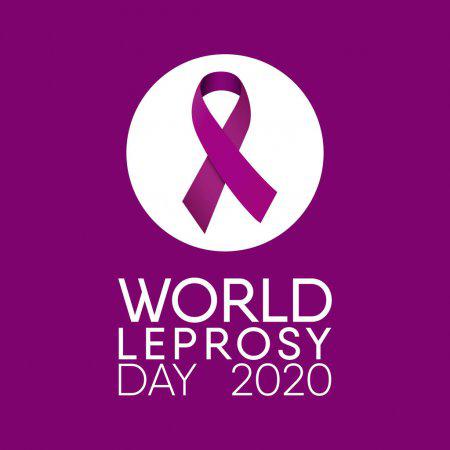
Many erroneous beliefs are related to leprosy, but specialists in the field prefer to point out three truths about it:. It is curable, it is not contagious because it ceases to be transmissible beginning with the first doses of treatment and it does not produce deformities or disability if it is diagnosed in time.
World Leprosy Day is observed on the last Sunday of January, this time on the 26th. Dr. Raisa Rumbaut Castillo, head of the National Leprosy Program of the Ministry of Public Health, explained that every year in Cuba an average of 200 new cases of both sexes are reported, from all provinces, mainly Granma, Santiago de Cuba, Camagüey, Ciego de Ávila and Havana, the latter because of the number of migrants it receives.
Many of the affected patients experience some kind of discrimination and exclusion and therefore face mental health problems, such as depression or anxiety. In view of this, this year’s theme will be: Stigma and human rights of people affected by leprosy.
The doctor stressed that unlike other countries where treatment is only supervised in the first dose, in Cuba leprosy patients receive free, supervised and controlled care (on an outpatient basis) in primary health care, that is, through the Family Doctor and Nurse Program. Patients are no longer isolated in sanatoriums (formerly called leprosaria).
The also First Degree specialist in Epidemiology and Master in Infectious Diseases said that this treatment is donated by the World Health Organization (WHO), which recently decreed that every January 30 (and from this year) will be commemorated the World Day for Neglected Tropical Diseases (WTD), which includes leprosy.
Apart from the fact that there is no neglected disease here, both dates will be remembered on 30 and 31 January with a national scientific day to be held in the capital, at the Comandante Manuel Fajardo University Clinical Surgical Hospital, which will be supported by the Cuban Dermatology Society.
Leprosy is a chronic disease that affects the peripheral nerves and the skin, but has no defined symptoms. This is why specialists call it a “great simulator”.
However, the most common symptoms are light patches of skin (brown and red), which may or may not have sensitivity disorders. That is to say, difficulties in differentiating the cold temperature from the hot one in the affected areas, as well as the loss of the sensation of pain.
The risk of contagion is very low and the incubation period, on average, is five years, but it can be as long as two years and as long as 20 years. The bacillus penetrates through the skin or the mucous membranes of the body and evolves slowly, progressively affecting the nervous system and the skin. This means that close and repeated contact with an untreated patient is required.
The first news of the disease in Cuba is dated January 17, 1613 and corresponds to the act of the Cabildo, when a group of neighbors from Havana, reported that “there are 4 or 6 people touched by the San Lazaro disease that have come from outside”. This document, of importance for the Medical History of Cuba, indicates the beginning of the leprosy endemic.
Every year, according to WHO data, around 200,000 new cases are diagnosed in the world, with India (more than 120,000 cases), Brazil (more than 28,000 cases) and Indonesia (more than 18,000 cases) being the nations with the greatest number of reports of the disease.
For years this organization has proposed to eliminate this disease. The goal was for each nation to achieve a prevalence rate of less than 1 case per 10,000 inhabitants. Cuba has been meeting this goal since 1993, and is now in the post-elimination phase.
“Behind a leprosy patient, there is always the one who infected them. That is why the most important thing is to interrupt transmission,” said the doctor.ef
“They Saw Us As Gods”
BBC MUNDO
“They saw us as gods, today they see us as nothing”:
The difficult situation of thousands of Cuban doctors in Brazil after Bolsonaro’s arrival in power.
Beatriz Díez (@bbc_diez)BBC News Mundo
BBC News Mundo
March 19, 2019
Translated and edited by Walter Lippmann for CubaNews.
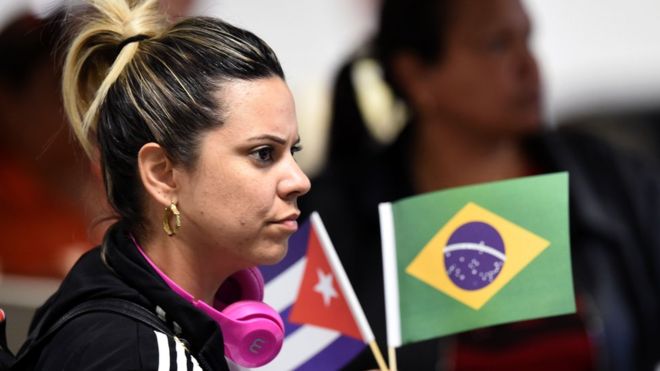
The “More Doctors” program was launched in 2013 on the initiative of then-Brazilian President Dilma Rousseff.
The program “Formerly they saw us as gods, today they see us as nothing”.
Cuban doctor Yulia Molina Hernandez does not know what other doors to knock to get out of the situation in which she finds herself.
Molina arrived in Brazil five years ago as part of the international program “Mais Medicos” (More Doctors), an initiative launched in 2013 by then Brazilian President Dilma Rousseff to facilitate basic medical care in disadvantaged and remote areas of the country.
Last November, Cuba announced its withdrawal from the program due to conditions imposed by the new president of Brazil, Jair Bolsonaro.
Cuba withdraws from the “More Doctors” program, for which it sent 8,000 doctors to Brazil. (Link to Spanish article not translated here.)
Brazil announces that it has “replaced” the thousands of Cuban doctors who left the country after the cancellation of the More Doctors program. (Link to Spanish article not translated here.)
The decision left more than 8,000 Cuban doctors facing the dilemma of returning to the island or staying in Brazil and being considered deserters by the Cuban government. Más Médicos” started in 2013 at the initiative of then-Brazilian president Dilma Rousseff.
More than 2,500 chose to stay and now denounce the precariousness in which they find themselves: they cannot practice medicine and cannot find other types of jobs.
“You get tired of being exploited.”
“It’s something I’ve been thinking about for a long time,” doctor Surizaday Fernándezr, told BBC Mundo.
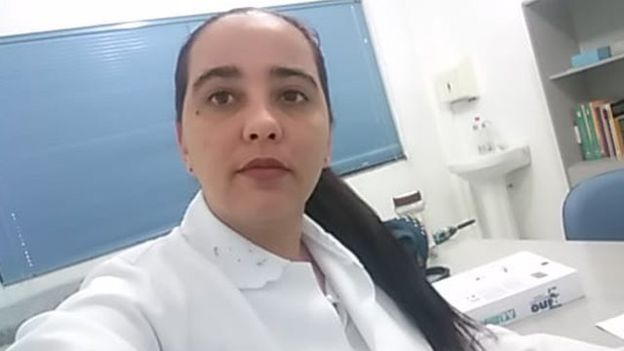
Cuban doctor Surizaday Fernández, 31, arrived in Brazil in August 2017. Photo: SURIZADAY FERNÁNDEZ
“You get tired of being exploited, in the end, you lose years of life, you lose time with your family, you lose a lot of things. I had made my decision.
Despite this, Fernandez, 31, was paralyzed when she learned that Cuba was withdrawing from the More Doctors program.
“I was walking and I was in shock, I didn’t know whether to go forward or backward. When Bolsonaro won, he knew that Cuba was going to pick us up, but I didn’t imagine it would be like that.
Fernandez then lived in Cunha Porã, a small municipality in the southern state of Santa Catarina, from where she moved to other municipalities to find employment.
There she began her odyssey, similar to that of many of her colleagues.
A Difficult Search
Following the announcement of Cuba’s withdrawal from the More Doctors program, Bolsonaro said Cuban doctors who wanted to stay in the country would receive asylum and could work as doctors if they re-validated their degree.
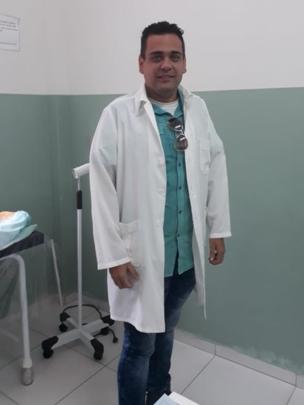
Joan Rodriguez is living with another Cuban doctor in the house of a Brazilian woman who does not charge them rent.
However, the reality is becoming much more complicated, as doctor Joan Rodriguez relates.
“I arrived in Brazil in June 2017 and I was working normally until the cancellation of the program. I got by for two months with the savings I had. At the end of last December, the Brazilian government created an edital, which is like a public announcement, to cover the 8,500 places that the Cuban government had taken out.
“We Cubans were able to register, but the day before we were able to apply for a place, our rights were terminated. We were told that we could go to the federal police in each state to ask for refuge.
“They gave us a paper, the request for refuge, with which we could go to the Ministry of Labor and ask for a job portfolio, which is like a permit to be able to work in Brazil,” he explains.
The job portfolio hasn’t been much use to him so far.
“When they realize that we are Cubans and that we were members of the More Doctors program, they close all our doors for work,” he laments.

The president of Brazil, Jair Bolsonaro, announced new conditions for the “More Doctors” program as soon as he won the presidential elections in his country.
“Many people, when they find out that we are doctors, tell us that they cannot offer us work because our hierarchical level is superior.
“We were doctors, yes, but today we are nothing, we are like anyone else, needing work in order to survive,” he says.
BBC Mundo tried to find out the position of the Brazilian Ministry of Health, but at the time of publication of this article, it did not receive a response.
Bad economic situation
Yulia Molina has hit the same obstacles as Rodriguez.
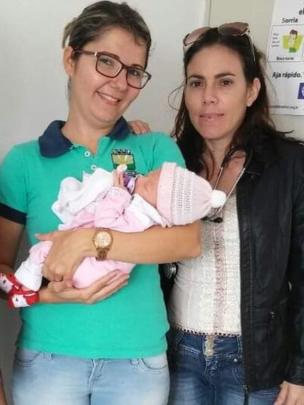
Yulia Molina (left) has not found a job in Brazil for two years.
Her story is similar to that of her colleagues, albeit with nuances. She did not leave the program when Cuba closed it, but two years ago because she was pregnant, with a threat of preterm pregnancy, and Cuba demanded that she return in that condition.
“Since I didn’t want to go back so as not to risk my life or that of my son, they gave me up as a deserter. Either you leave or you stay. That was the choice I was given, and I stayed,” Molina told BBC Mundo.
The 34-year-old doctor lives in the northeast of the country, where the economy is not at its best.
“The entry of money where I live is much poorer because things are much more expensive. What you buy in the south for a price, here they sell it to you for double. I haven’t worked in two years.
“I can’t find a job because I’m a doctor, I don’t care, I just want to work, ‘but you’re a doctor,’ they tell me.
“They are obstacles that face us, for no reason whatsoever. What there is xenophobia with any foreigner, not only with Cubans. Formerly they saw us as gods, today they see us as nothing,” she says.
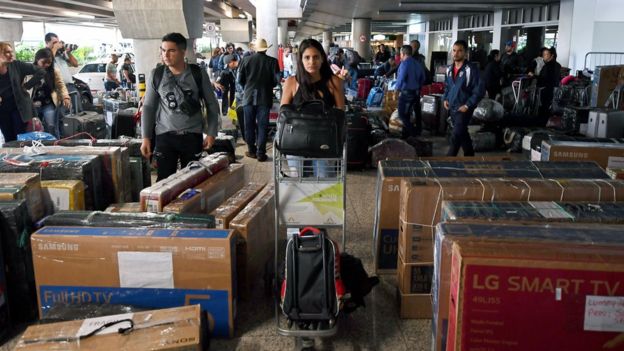
Thousands of Cuban doctors packed their things and returned to Cuba after their country’s withdrawal from the international “More Doctors” program.
Molina considers herself lucky because at least her husband has a job. She says she knows many of her compatriots who are going through very delicate situations.
“I know cases of people living in a house to pay the rent, eating in the least healthy way possible, colleagues who are desperate, many thinking of going out in caravans.
Objective United States
The Cuban doctors with whom BBC Mundo spoke agree that the option of the title revalidation is practically unattainable. The main obstacle, they say, is that the Cuban government retains their documentation and without these papers, there is nothing they can do.
Returning to Cuba is out of the equation. Being considered deserters, these doctors cannot return to the island for another eight years. And even if the Cuban government decides to allow them to return as they expressed last February, the doctors fear the treatment they might receive.
Thus, Yulia Molina, Joan Rodriguez, Surizaday Fernandez and most of their paralyzed colleagues in Brazil have their sights set on the United States.
“Our future is very uncertain. We realize that we cannot stay in this country. At the beginning of January, Republican Senator Marco Rubio proposed reopening the U.S. the medical parole program that Obama closed in January 2017,” says Rodriguez.
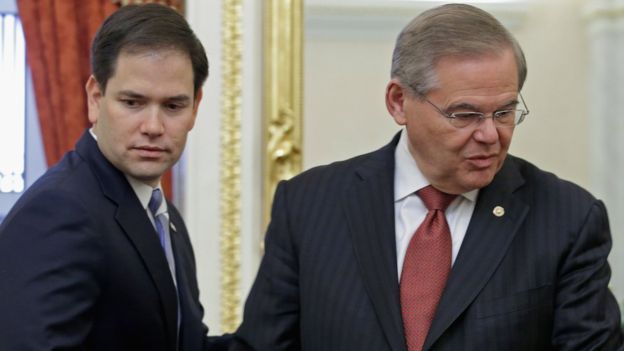
Last January, Senators Marco Rubio (left) and Bob Menendez presented a motion for a resolution to reopen the Parole Program for Cuban Medical Professionals.
The parole the doctor is talking about is the Cuban Medical Professionals Parole Program (CMPP) which was launched in 2006 and which allowed Cuban medical personnel who were in other countries (i.e., not in Cuba or the United States) to apply for permission to enter a U.S. embassy or consulate.
On January 12, 2017, the U.S. and Cuba signed an agreement to normalize their migration policy relationship, and the U.S. Department of Homeland Security terminated the CMPP.
Molina has the same hope as Rodriguez. “The only real alternative would be the opening of the parole that is what we are fighting for today. This is not a story, it’s not that we’re faking it. And it’s not that it’s going to get better, it’s that we don’t see a better future in Brazil.
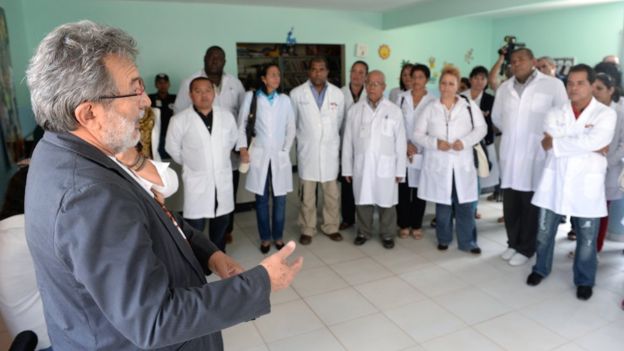
Many of the Cuban doctors who stayed in Brazil are unable to find employment, even in other sectors.
For her part, Fernandez is clear that she is not going to stand idly by. “When I decided to stay out of Cuba, I decided to pull forward. I assumed I wouldn’t practice medicine for long, maybe never again,” she admits.
“I’m not going backwards or to gain momentum. Always in the hope that parole will open and have the opportunity, later, to do another formation. In the U.S. they have study programs, more possibilities of employment, of having a normal, dignified life.
“I studied six years that cost me my sacrifice, my effort and that of my family, no one else. I do not admit that a person comes to treat me as if I were garbage. I work in whatever is, in whatever touches me, but that is respected”.
Sole survivor of Havana plane crash still hospitalized

Sole survivor of the plane crash in Havana remains hospitalized in Ameijeiras
October 20, 2018
Translated and edited by Walter Lippmann for CubaNews.
Maylén Díaz Almaguer, the only survivor of the airplane crash of May 18, is being assisted by a multidisciplinary group from the Hermanos Ameijeiras Hospital in Havana, with the participation of specialists from other institutions.
According to the doctor, the patient continues the process of recovery and stabilization of organ functions, oral nutrition and infection control.
Neurological rehabilitation measures and respiratory mechanics are also maintained.
The healing process of soft-tissue injuries is also consolidated, with good evolution and the emotional state and level of cooperation of the patient with the medical treatment is adequate.
At the request of the relatives, the parts relating to the evolution of Maylén Díaz Almaguer are kept private.
Since August 1, Diaz Almaguer has received treatment and rehabilitation in the Ameijeiras. Previously, she was cared for at the General Calixto García University Hospital, where she received treatment and rehabilitation.
The accident occurred on Friday, May 18, when the Boeing 737-200 of the Mexican company Damojh, rented by Cubana de Aviación, fell to the ground just moments after taking off from Havana’s José Martí international airport, in which 112 people, including the crew, lost their lives.
Subscribe to Blog via Email
| M | T | W | T | F | S | S |
|---|---|---|---|---|---|---|
| 1 | 2 | |||||
| 3 | 4 | 5 | 6 | 7 | 8 | 9 |
| 10 | 11 | 12 | 13 | 14 | 15 | 16 |
| 17 | 18 | 19 | 20 | 21 | 22 | 23 |
| 24 | 25 | 26 | 27 | 28 | 29 | 30 |


You must be logged in to post a comment.